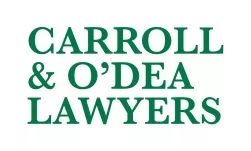- within Strategy and Insurance topic(s)
- with Senior Company Executives, HR and Finance and Tax Executives
- with readers working within the Insurance, Metals & Mining and Construction & Engineering industries
Facts
The Plaintiff (MC) commenced proceedings in the New South Wales Supreme Court on 7 July 2022 claiming damages against Casa Generaliza Della Societa Dei D'Africa Detti Padri Bianchi (White Fathers). The White Fathers did not participate in the hearing.
MC alleged high level regular sexual abuse by Father Camil Dufort between 1973 and 1975 (the relevant period) at St Mary's Church in Erskineville in New South Wales (the Church). The Court accepted the Plainitff's evidence of the sexual assaults [at 81]. The Plaintiff alleged that the abuse always occurred when they were alone, usually after school one to two times each week.
Initially, the Plaintiff argued the Defendant was liable for damages, either in negligence or by way of vicarious liability. The proceedings were marked part heard pending the High Court's Judgment in Bird v DP (a pseudonym) [2024] HCA 41 and the claim in vicarious liability was subsequently abandoned following the High Court's judgment, inter alia: vicarious liability cannot be imposed if the tortfeasor (person who committed the wrongful act) is not an employee [at 236].
Issue
Whilst it was accepted that the White Fathers ('the Defendant') had a duty of care to exercise reasonable care for the Plaintiff, the question at law was whether the risk of harm was foreseeable, and whether the Defendant knew or ought to have known of it pursuant to Section 5B of the Civil Liability Act. To determine this, the Plaintiff would need to point to a breach of duty and prove his case on the balance of probabilities, taking into consideration the gravity of the allegations (pursuant to Section 140(2)(c) of the Evidence Act 1995 (NSW).
During the relevant period, Father Anthony Coolen was appointed to the Church and had the immediate / direct responsibility for supervising Father Dufort. It was submitted that Father Coolen knew or ought to have known, on the balance of probabilities that the Plaintiff was spending considerable time at the Church, including in private bedrooms alone and unsupervised, based on the frequency and timing of the abuse. Further, it was submitted that because both priests lived in the presbytery, Father Coolen must have known about the improper relationship.
Application
Both submissions concerning foreseeability were rejected by Weinstein J. In his reasoning, he noted that the evidence established that there were only two active priests at the parish, being Father Coolen and Father Dufort. It was noted that Father Coolen would have been exceptionally busy as his duties included mass and reception of sacraments, devotional practices, home visitation, counselling, and administration of the parish including the construction and maintenance of the parish buildings [at 98]. It was further noted that it was not uncommon for a priest to have a one-on-one connection with a child for certain purposes [at 95].
In relation to reasonable foreseeability and breach of duty Weinstein J states [at 100 – 101]:
"Nothing in the evidence before me points to a breach of a duty of care owed to the plaintiff. It simply cannot be said that the evidence demonstrates that the risk of harm to the plaintiff was reasonably foreseeable. There is nothing to suggest that the Fr Coolen knew or ought to have known that Fr Dufort was sexually assaulting the plaintiff or that he was interacting with him in an inappropriate manner.
Further, as the report of Fr Dillon candidly notes, if Fr Coolen – as the superior of the house – was aware that anything untoward was occurring, he would have done something about it."
Law
As Section 5B(1)(a) of the Civil Liability Act could not be satisfied, the claim in negligence failed.
Accordingly, there was a verdict and judgment for the Defendant, with no order as to costs.
Justice Weinstein also conducted an assessment of quantum (against the possibility that he was wrong). He assessed the plaintiff's quantum as 60% of a Most Extreme Case for non – economic loss with quantum totalling $1,104,664 in the absence of a contradictor.
You can view the full case here.
The content of this article is intended to provide a general guide to the subject matter. Specialist advice should be sought about your specific circumstances.



